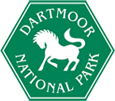Our Upland Commons
Our Common Cause: Our Upland Commons
We’re proud to be part of Our Upland Commons, a £3 million project which is helping to secure the future of upland commons in Dartmoor, the Yorkshire Dales, Lake District and Shropshire Hills.
Led by the Foundation for Common Land, we’re one of 25 partners involved. It’s been funded by The National Lottery Heritage Fund, Esmée Fairbairn, Garfield Weston Foundations plus local funders: the Duchy of Cornwall, Dartmoor Preservation Association, South West Water and Devon Wildlife Trust, among others.
Centuries old farming practices on commons are unexpectedly relevant to many 21st century challenges: they can deliver nature recovery, flood management, carbon sequestration and wellbeing. But this land management system is under threat. Our project is taking action now, seizing the moment for our commons and turning challenges into opportunities.
Locally, work focuses on Harford and Ugborough Moors, Holne Moor and Walkhampton Common.
What we're doing
* Improving herd health through understanding the nutrition avaible to stock on the common.
* Trailing new methods of Molina control on Dartmoor’ s blanket bogs.
* Working with commoners and landowners to protect and restore spring mires.
* Understanding the health and distribution of trees on the commons and working together with other people to see how it could be improved.
* Investigating and restoring neolithic stone rows on Harford and Ugborough.
* Managing bracken for butterflies and surveying birds across the commons.
Commons on Dartmoor
Commons form the heartland of Dartmoor. 37% of the National Park is common land and these commons make up 75% of Dartmoor’s moorland. You’ll spot Scottish Blackface sheep, rare Whiteface Dartmoor sheep, Galloway and South Devon cattle, as well as Dartmoor ponies here.
The grazing of livestock maintains the different vegetation and lots of important habitats.
Commons are privately owned spaces. Their owners include private estates, families, and organisations. Often, they look untouched and free from intervention but they are shaped by the action of commoners over many centuries.
All common land is open access which means we all have the right to enjoy recreation on foot and horseback on commons.
Who are the commoners?
There are over 3,900 farmers who are commoners in England. They have the right to graze the land or use its resources - such as firewood, peat or bracken. Each flock on the commons has an area of land where they stay without fencing; this is known as a ‘heaf’, ‘heft’ or ‘lear’. This way of shared land management is called commoning and has contributed to the development of some of the UK’s most spectacular landscapes for 800 years.
The Dartmoor Commoners Council represents commoners and has a number of responsibilities.
Why do commons matter?
These productive landscapes help us grow food, absorb rainfall, clean water, nurture wildlife, and take pleasure from recreation. The management of common land, when at sustainable levels, has ensured the survival of ancient monuments and rare wildlife, plants, birds and butterflies. Careful grazing can maintain the balance of delicate upland ecosystems on huge stretches of open landscape.
Find out more
Tamsin Thomas is Dartmoor's Project Officer. Tamsin has a degree in Environmental Science, worked for Natural England securing funding for a £10 million project to restore and conserve sand dunes across the UK and worked with the University of Exeter on international projects.
Contact Tamsin: tamsin@foundationforcommonland.org.uk
Read about the work taking place on Dartmoor's commons
Explore Commons Stories and hear from those who look after the land.
